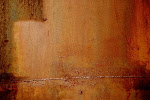I've been ignoring my blog, instead focused on some work projects and a memoir in progress. Here is an excerpt from that, written about the time in my life when my husband and I bought our first home (the "It" that starts the excerpt), which I hated:
It just wasn’t my dream home, which I had found several weeks prior—a mustard-yellow, 18th century dilapidated colonial, with a modern kitchen and upstairs master suite, both recently added on. Lar’s version of the story also includes something about the furnace being referred to as “a monster” and a memory of being in this historic home with its seller’s realtor during one of the showings. As she and he stood in one of the upstairs bedrooms original to the house watching rain seep through closed windows, the realtor desperately pleaded to an invisible other that she “would not lose this house.” Apparently, there was some question about whether the home was sellable at all. (Lar would later tell me that the bank wouldn’t give us a mortgage for this home, reasoning that it was worth much less than the asking price.) None of the practical, financial details left their impression upon me, though, and they couldn’t distract me from those things that did matter. I found the leaky windows charming. I loved that this was a home in need of care and repair. My poetic and melancholic heart melted at the thought of weeping walls—a term from the lingo of the construction and home repair industry that describes condensation on the walls of a basement, for example, which can result from a host of factors and might be expected when the basement dates back to the 18th century. Most of all, I loved its juxtaposition of opposites: The intimacy of the small rooms—made more endearing by low ceilings and creaky floors—opened-up to a large kitchen with glass doors running the length of an entire wall and leading to the backyard deck. This was a home appropriate to the complex range of human moods, needs, and experiences—including my much desired need to, every once in a while, escape it all.
It was from behind the kitchen’s glass wall that I caught my first glimpse of the sanctuary: A two-story, oversized barn sitting proudly on the property.
When Lar and I stepped out the kitchen door and onto the deck, only yards away from the barn, I felt a familiar, even if infrequent, warm, tingling sensation spread across my chest and down into my gut. An understated smile, which seemed to give birth to itself, crept across my face and told me that I was home. Lar started to walk with the realtor ahead of me—around the yard and into the barn, I think, probably seeing dollar signs being flushed down a toilet in his mind’s eye—as I stood, still, starring, taking-in the barn from a distance. Here was the potential studio I had always wanted. I wasn’t an artist or a writer, but I dreamed of an art studio or a writing space nonetheless. After a childhood full of shared bedrooms, and sometimes even shared beds, I craved a space of my own, a getaway, a sanctuary. The warmth of my solar plexus morphed into goose bumps that spread down my arms. A sacred space to support my need to escape, recharge, and maybe even dream. In childhood it was my dresser, always impeccably arranged (and which I have kept all these years), that served as my sacred place. The barn, of course, was quite a bit larger than the dresser, and although it felt like home I knew somewhere deep within me that it would not be. I chose not to go in. And when Lar came out, we wrapped-up our tour, thanked the realtor, and left.
Many years later I’m still not exactly sure why I chose not to go into my would-be-sanctuary. That part of me that disallowed dreams knew it would have been an impractical purchase. The house was a real fixer-upper that neither Lar nor I had the talent for (an enormous understatement). Yes, I had a vision. I saw potential. And to me, precisely because I could have played a part in realizing its greatness, it was a dream home... and dreams aren’t real, I thought. So we walked away, and as I faded out Lar continued the search for a more practical home. The non-descript floral-papered home that we eventually bought was just that.
Subscribe to:
Post Comments (Atom)

.jpg)
2 comments:
Our creations leave our stamp on the world in a tangible way, and from that I take solace for our temporary passing. Here and there, in big and small places, perhaps we leave an echo of ourselves through the ages, to be discovered by others at the most unlikely times.
Practicality - what it is, what forms it takes, what disguises it takes on, and what hides within it that is not it - I plan to ponder it.
I just finished a great book called The Architecture of Happiness. I'm reminded of many of its themes when I read your post. I'm begining to understand how creativity is truly the root of all life- and therefore necessary to all of us who wish to be alive while we're on this earth...
Post a Comment